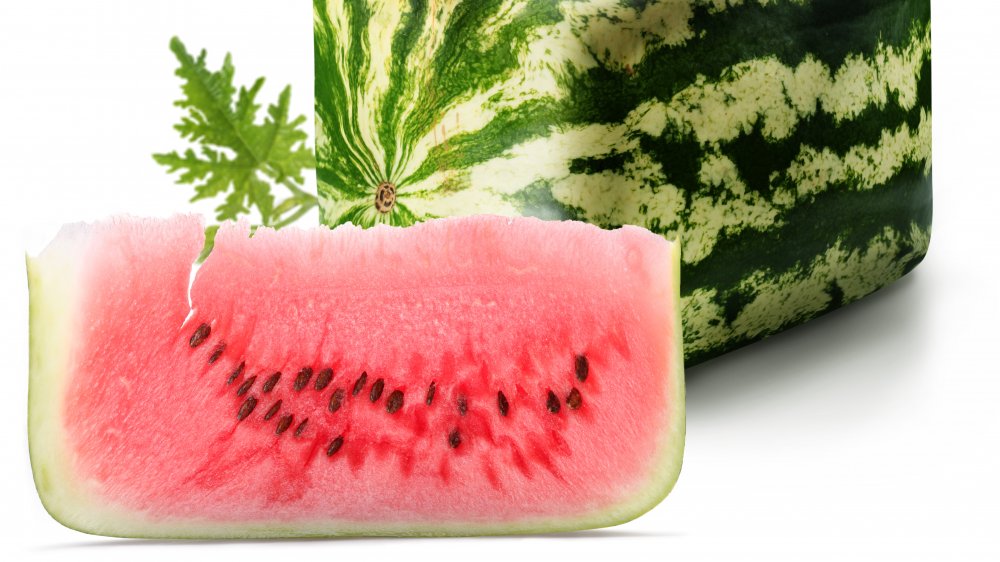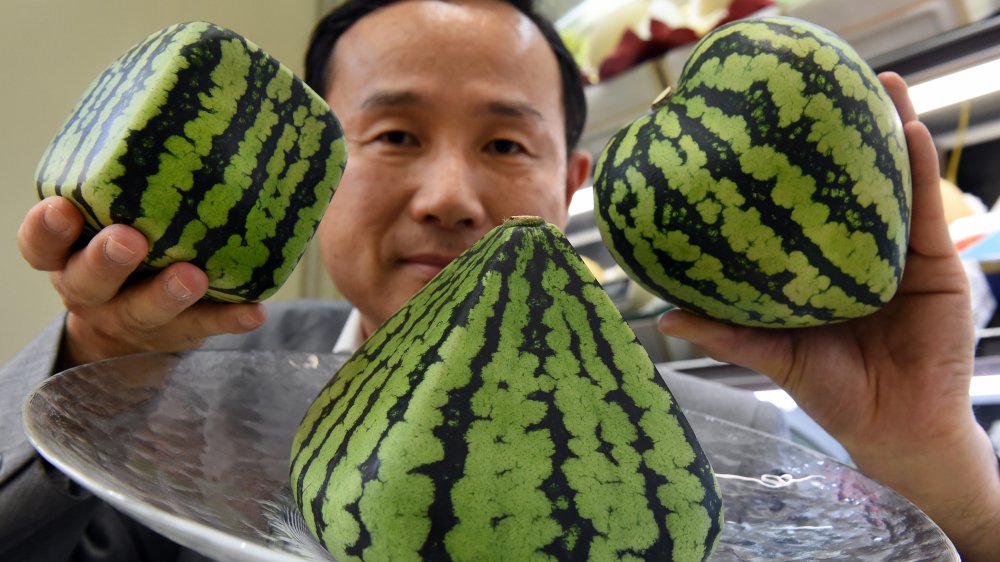The Real Reason Square Watermelons Are So Expensive
People have been altering foods for years to meet both nutritional demands and visual appeal. In fact, many foods looked totally different a few centuries ago when compared with their modern versions. This can be a tiresome process full of trial and error and sometimes the result isn't really all that superior and the price of the food only becomes more expensive.
A perfect example of this is the cubed watermelon. Cubed or square watermelons first emerged in Japan in the late 1970s, but have now become a novelty item in many other parts of the world (via What About Watermelon). Watermelons, of course, don't naturally grow square and aside from a visual appeal, the only real advantage to a cubed one is that it's not going to roll off the counter and break on the floor.
If you'd like to pick up one of these odd fruits, you'll need to be ready to pay a hefty price.
Square watermelons require a lot of work
A square watermelon can cost you up to $200, depending on the size (via CTV News), though most hover in the $100 range. For a lot of people, that's a ridiculous price to pay for a fruit that doesn't taste any better — and some even say taste worse — than its round counterpart, so why are they so expensive?
The high price tag is because growing these novelty fruits is pretty labor-intensive. Science doesn't get any credit for the watermelon's square shape, though — it's all about molding. A young watermelon is placed in a square-shaped mold and it's then constantly monitored while it matures to ensure that it grows in its cube shape without any cracking and maintains perfectly vertical stripes (via Post-Gazette). Some melons don't conform to the mold, which means the ones that do are that much more valuable.
Japan certainly has a reputation for the bizarre and some farmers have even begun growing pyramid and heart-shaped watermelons. As we said, though, you're paying for novelty — and only novelty — with this uniquely-shaped fruit.

